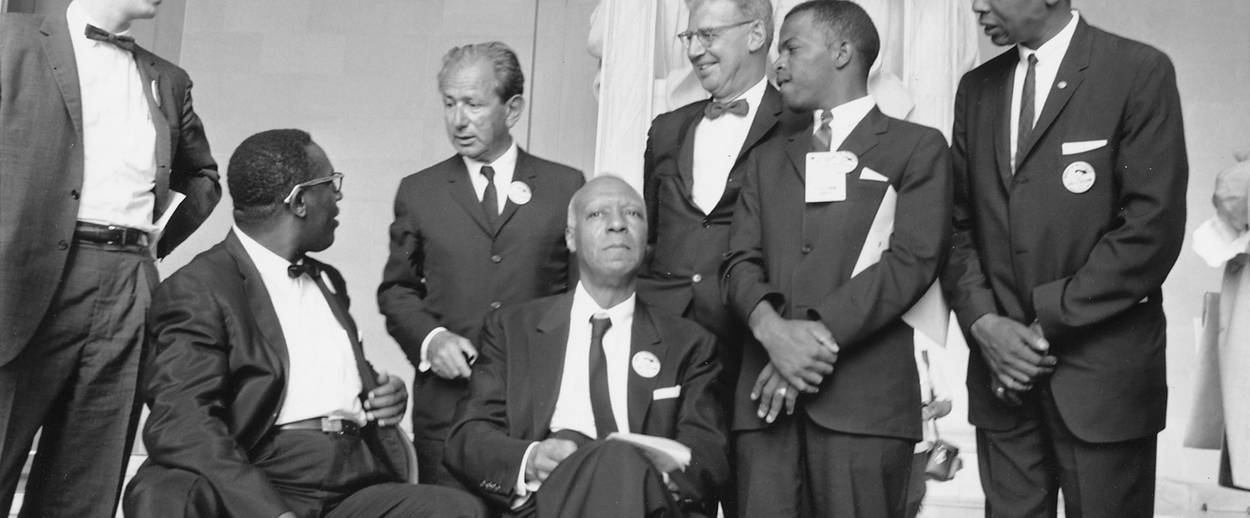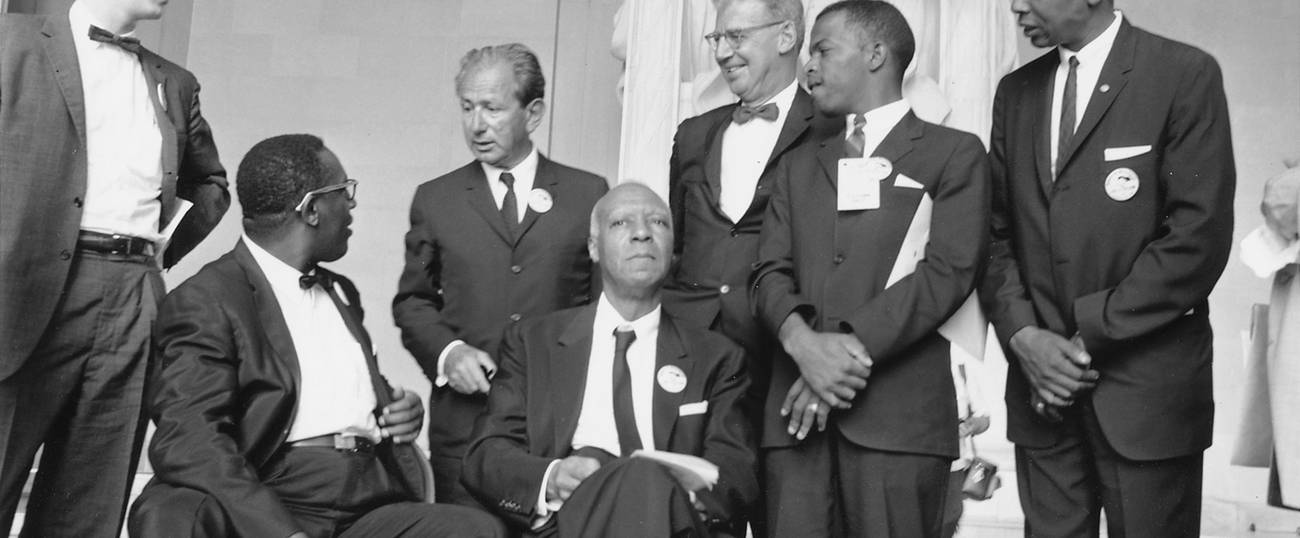The Gods of Civil Rights
A modest proposal for A. Philip Randolph and the architecture of New York




If they ever do build a new Penn Station in New York, I hope they erect a statue there of A. Philip Randolph, the union leader. A proper statue of Randolph already occupies Union Station in Washington, D.C., and a somewhat grander statue occupies the Back Bay rail station in Boston, and really there ought to be statues of the man in rail stations across the country. New York’s statue, if anyone ever puts it up, ought to be the grandest of all, given that Randolph’s union, the small but supremely influential Brotherhood of Sleeping Car Porters, maintained a headquarters in Harlem. He was a New Yorker. I hope it will be an old-fashioned statue, though, with a classical pedestal and a noble look, and nothing too modernist or post-modern. Old-fashioned statues of a certain sort are supposed to put us in mind of the ancient Roman statues of the gods. Immortality is supposed to be their theme—all of which, in Randolph’s case, makes solid sense. But statues in the Roman style went out of fashion sometime in the mid-20th century.
Something similar happened to public buildings in the Roman style, railroad stations in particular. Grand Central Terminal in New York was constructed precisely to be a Roman temple. Its domed ceiling is the Pantheon’s, sort of. But by the 1950s and ’60s the efforts were vast to demolish the corny old building and replace it with something sleeker, taller, and less pagan. The original Penn Station a few blocks away was likewise a Roman temple. Tuscan columns lined the front. And down it went in 1963 to make room for Madison Square Garden and the present Penn Station, which are soulless, ugly, and detestable. Those old Roman temples—they went out of fashion because of real estate greed. But they went out of fashion also because the tides of esthetic fashion, in flowing outward from the classical taste of previous centuries, persuaded too many people that form follows function, and ornamentalism is sentimentalism. But mostly the Roman style went out of fashion for a still larger reason. It was because society managed to forget that classical columns and domes and vaults and statuary used to have a purpose apart from holding up the roof. The classical features were supposed to conjure the antique virtues, as visible in the pages of Plutarch: nobility, altruism, civic solidarity. They were built to be the architectural and sculptural backdrop to moral sensibilities suitable to the severe Roman republic. To amble through the architecture and gaze at the statuary was supposed to be a character-building exercise. You were supposed to think that beauty is citizenship, and citizenship, beauty. Form did follow function, but the function was partly spiritual.
Is this beyond us, today, architecturally speaking? As it happens, the new Penn Station, if it ever gets built, will be laden with Roman references, unless the wrong architects get their hands on it. The new station is supposed to inhabit the innards of what is now the James A. Farley Post Office across the street on Eighth Avenue—the old post office, whose Corinthian colonnade was built in parallel with the long-gone colonnade of the original Penn Station. And so, if the plans go ahead, there will be, in the world of railroads, a Roman revival. Statuary ought to follow. And, as in Washington and Boston, the bronze image of A. Philip Randolph ought to arise.
That is because, if American democracy has a mythology worthy of sacred celebration, Randolph ought to loom as one of the gods and heroes. Back in the 1920s, which was the era of luxury overnight train travel, but was also an era of outrageous theories and movements of white supremacy, the sleeping-car porters were black. Randolph, from his uptown home in the entirely admirable Socialist Party, joined together with a few other militant souls to mobilize the porters to found their union. In the 1930s he succeeded in having his union recognized by the American Federation of Labor. He succeeded in hoisting himself into the AFL’s leadership council, which is to say, he succeeded in forcing the leadership of the American labor movement to abide by what were supposed to be the principles of the labor movement. At the beginning of the 1940s he mobilized his troops to put serious pressure on President Roosevelt to order the end of anti-black hiring restrictions in the American defense industry, and, though Roosevelt appeared not to be happy about it, Randolph succeeded at this, too. At the end of the ’40s he put similar pressure on President Truman to order the integration of the Armed Forces. Truman issued the order: an immense step. Randolph’s comrades in the Brotherhood meanwhile led different wings of the civil rights movement around the country. And, in 1963, the year the old Penn Station began to go down, Randolph’s many campaigns came together, his civil rights battles, his trade union wars, and his efforts for the respectable old Socialists (who by then had shriveled into a political club, no longer a party), and he presided over the campaign to mobilize the immense and historic March on Washington for Jobs and Freedom. He was one of the speakers. But he and everyone else expected the ultimate orator to be the very young Rev. Martin Luther King, Jr. And King delivered on the promise.
Will someone argue that mythic figures do not exist? But this is a matter for us to decide. Here was a mythic figure. We mark King’s birthday. We ought to celebrate the mythic hero who prepared the way for King, as well—ought to walk past Randolph’s bronze statue in one railroad station after another and find ourselves pausing for a moment of reverence and reflection, maybe long enough to cock our heads silently in salute—and then rush onward to our travels and commutes.
Paul Berman is Tablet’s critic-at-large. He is the author of A Tale of Two Utopias, Terror and Liberalism, Power and the Idealists, and The Flight of the Intellectuals.